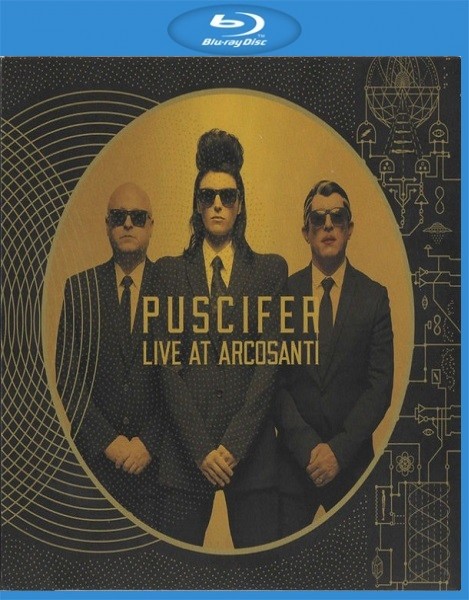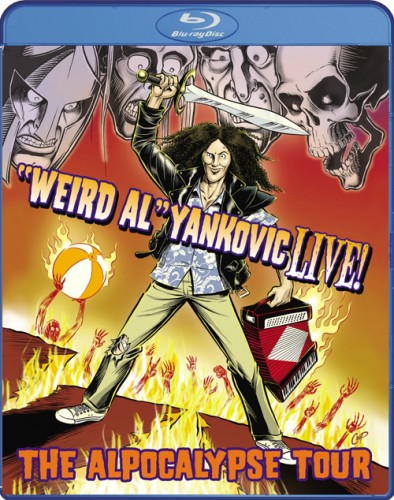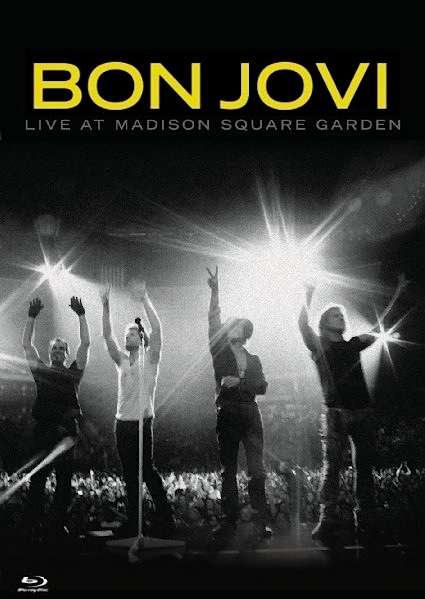
Leonore Piano Trio – Arensky: Piano Trios (2014)
FLAC (tracks) 24 bit/96 kHz | Time – 01:13:01 minutes | 1,27 GB | Genre: Classical
Studio Masters, Official Digital Download | Front Cover | © Hyperion Records
Arensky’s Piano Trios represent a fine example of the Russian romantic piano trio, a form ‘invented’ by Tchaikovsky, Arensky’s close friend and influence. Piano Trio No 1 is the more popular of the two, dedicated to the cellist Karl Davidoff. Davidoff is regarded as the founder of the Russian school of cello-playing, and Arensky’s dedication accounts for the fact that the cello plays such a prominent role, having most of the principal themes and often seeming to eclipse the violin in importance. Piano Trio No 2 is one composer’s last works, and marks a considerable advance in Arensky’s compositional techniques.
Hyperion is delighted to present the Leonore Piano Trio (Tim Horton, Benjamin Nabarro and Gemma Rosefield, who features as soloist on Hyperion’s Romantic Cello Concerto series Volume 3: Stanford Cello Concertos) in its debut recording.
Composer: Anton Arensky, Sergei Rachmaninov
Orchestra/Ensemble: Leonore Piano Trio
The heroic years of Russian musical Romanticism, roughly from the 1850s to the early 1890s, were dominated by the Nationalist school of the ‘Mighty Handful’ (or the ‘Five’)—Balakirev, Borodin, Musorgsky, Rimsky-Korsakov and Cui—centred on St Petersburg, and the more Europeanized figures of Tchaikovsky and Rubinstein. The generation that came to maturity after them included many important and colourful figures: Glazunov, Taneyev, Rachmaninov, Scriabin, Medtner and Liadov, for example. But to a greater or lesser extent they all had to define themselves in relation to, and against the background of, their illustrious seniors, who were often their teachers. This is the certainly the case with the career of Anton Stepanovich Arensky.
Arensky was born in Novgorod and, though originally a pupil of Rimsky-Korsakov in St Petersburg, where he gained the Gold Medal for composition, he became a professor at the Moscow Conservatory in 1882, at the age of twenty-one, where he was closely associated with Tchaikovsky, both in friendship and stylistic emulation: the kinship of Arensky’s musical language to that of the older composer has often been noted. (It certainly piqued Rimsky-Korsakov, who remarked in his memoirs that as a result Arensky would be thoroughly forgotten!) Among the pupils in his harmony class were Rachmaninov and Scriabin, and like Rachmaninov Arensky composed a work in memory of Tchaikovsky—his String Quartet No 2, in which he unusually substituted a second cello for the second violin, probably in order to darken the tone colour for his elegiac purpose. In the 1890s he returned to St Petersburg as the director of the Imperial Choir, a post for which he had been recommended by Balakirev, but retired from this position in 1901 with a pension. Heavy drinking and an addiction to gambling are said to have ruined his constitution, and Arensky died comparatively young, of tuberculosis, in a sanatorium at Perkijarvi, Finland, leaving an output of moderate size of which the best-remembered pieces are undoubtedly the second string quartet and the Variations on a theme of Tchaikovsky which he extracted from it and scored for string orchestra.
Tchaikovsky’s friendship and music had a powerful impact on Arensky, and one work that made a deep impression was Tchaikovsky’s epic Piano Trio of 1881–2, subtitled ‘in memory of a great artist’ and composed as a memorial for the pianist Nikolai Rubinstein. The genre had hardly existed in Russia before this work, and with it Tchaikovsky initiated a tradition of elegiac or commemorative trios. Rachmaninov, for example, composed a pair of Trios élégiaques in 1892–3, the second of them in memory of Tchaikovsky himself. Just one year later Arensky composed his own Piano Trio No 1 in D minor Op 32, conceived as a memorial to his (and Tchaikovsky’s) friend, the cellist Karl Davidoff, who had been director of the St Petersburg Conservatoire when Arensky was a student there, and who had died in 1889. Davidoff is regarded as the founder of the Russian school of cello playing, and Arensky’s dedication accounts for the fact that the cello plays such a prominent role, having most of the principal themes and often seeming to eclipse the violin in importance; at times this work might almost be described as a duo for cello and piano with obbligato violin.
The lyrical and rhapsodic theme that opens the expansive first movement—stated by the violin at first, but taken up by the cello and then elaborated by both instruments in duet—has been believed by some commentators to be a portrait of the generous and outgoing Davidoff. Here, as throughout the movement, accents of regret and melancholy can be detected among the melodic riches. A quicker, more capricious transitional theme, rather dance-like, leads to a warmly expressive second subject announced by the cello, and a more dramatic theme, with the piano to the fore, rounds off the exposition, which is repeated in full. The development is comparatively short and mainly based on the opening theme and the dance-like idea, working up to a full-scale recapitulation and a quiet, elegiac coda.
The second movement Scherzo is in the form of a scintillating waltz, full of the spirit of the dance as well as good humour and delightful bursts of bravura from all three instruments, especially the piano. In this whimsical confection Arensky largely bases the music around a little stuttering figure in the violin, swooping scales and sparkling keyboard decorations. The cello leads off a more ponderous but still humorous trio section in which it seems the dancers are doing their best not to be wrong-footed. The waltz returns, and stutters to its end.
The Adagio slow movement, titled Elegia, is the heart of the D minor Trio. Muted cello, supported by piano chords, introduces a theme at once doleful and tender; the violin is also muted, and takes it up before the two instruments share the theme together. The grief-stricken atmosphere is unmistakable, though there is a certain dream-like quality to the music, too—it could almost be by Fauré rather than any Russian composer. The piano then has a contrasting, almost childlike theme supported by gentle figuration in the string instruments. Roles are reversed as violin and cello take up this second theme against different figuration from the piano. When the first theme returns on the strings the piano part is different again until the coda, where cello and piano are heard as at the movement’s opening.
The finale, whose function is very much to pull together and round off the work’s disparate threads, begins with a dramatic, even explosive theme full of rhythmic momentum. This idea injects drive and impetus throughout the movement, although it really functions as a ritornello between which Arensky places reminders of previous movements. Soon, for instance, we hear a lyrical tune that resembles the main theme of the Elegia, and a further helping of the dramatic theme simply introduces the gentle music from Elegia’s central section. The ritornello idea itself is then developed at more length, and this time leads, in a mood of nostalgic reminiscence, to the opening theme of the entire work. The finale’s theme breaks back in, insistently, and drives the work to an exciting but rather grim conclusion.
Arensky composed his Piano Trio No 2 in F minor Op 73 nine years after the D minor Trio: it has no declared memorial purpose, but it was one of the composer’s last works, and considering his poor state of health by this time it might well be regarded as a personal swansong. It also marks a considerable advance in Arensky’s compositional techniques. While the first movement of the D minor Trio fell into clearly marked sections of an almost textbook sonata form, that of the F minor is a more seamless affair. Though the sonata outlines are still there, they are all but subsumed into the sense of ongoing argument. It opens with a restless, serpentine theme, quietly introduced by the piano, that snakes its way through the movement with passion and a certain obsessive quality. The first five notes of this theme, with its questing dotted rhythm, become an especially pervasive element—and they also function as a motto that appears in the other movements. The mood is deeply serious and thoughtful throughout, as befits the sombre F minor tonality. Though there are other thematic ideas, the main theme is repeated, metamorphosed and split up, acting both as the focus for the whole design and as the basis for an intricate but informal process of variation. When the movement has all but run its course, there is a sudden change of character for the coda, which unleashes a harried pursuit to the decisive final cadence.
This time Arensky places the slow movement second. It is a Romance, beginning in almost salon style with a duet for violin and cello introducing the fragrant and delicate main theme on the piano. The development of this theme—in an ever more serious and thoughtful direction, with one disturbing emotional eruption—confirms Arensky’s quality as a master of melody, while the opening bars recur four times with haunting effect. The motto theme from the opening movement appears just before the last of these appearances, which rounds off the Romance with considerable pathos.
The Scherzo somewhat resembles the corresponding movement in the D minor Trio, at least in its general playfulness and its character of a capricious waltz with a cascading piano part. It is a more sophisticated conception, however. The central trio section, led off by the cello, is disarmingly tuneful, although the motto theme can be heard here also. The return of the waltz is truncated.
The finale is a theme and variations, a form that Arensky was very fond of and handled with great skill (as his classic Variations on a theme of Tchaikovsky demonstrates). The reflective theme, announced by the piano, is quite a complex affair, with its hints of canon, and superficially it might seem unpromising variation material; but after the theme’s initial presentation each of the six variations has a strongly drawn individual character, including an exciting Russian dance for the second variation, a rather Chopinesque waltz for the third, a capricious yet full-blooded fourth variation and a further, more sumptuous waltz for variation 5. Several of the variations, in fact, seem to hark back to elements heard in the previous movements, though not as blatantly as in the finale of the D minor Trio. The final variation is passionate, even grandiose, and climaxes in a return of the motto theme before the coda winds down to a final, introspective statement of the finale’s theme in its original form.
Given the paucity of Sergei Rachmaninov’s original chamber music it is hardly surprising that a number of instrumentalists have been moved to try to enlarge the repertoire by arranging some of his other works. In fact with their long soaring melodic lines and complex accompanimental patterns, his piano pieces and vocal music are particularly well suited to instrumental duets, and some arrangements have been notable successes. The Vocalise, one of the best-known of Rachmaninov’s shorter compositions, was composed in 1912 and is especially appropriate for such treatment, since he wrote it originally for wordless voice and piano (it was published in 1915, as the last of his fourteen songs Op 34, with a dedication to the singer Antonina Nezhdanova). Rachmaninov’s work is conceived as if a single huge melodic paragraph, the main theme suggesting a Baroque, Bach-like serenity with subtle Russian inflections. Presenting the voice, as the original version does, as a pure ‘instrument’, the Vocalise is a classic demonstration of the sovereign power of melody without the need for words. Rachmaninov also made a version for soprano and orchestra, and another for orchestra alone; he also permitted his cellist friend Anatoly Brandukov to make an arrangement for cello and piano. The arrangement for piano trio recorded here is the work of Rachmaninov’s close friend Julius Edvardovich Conus (1869–1942), who had been a pupil of Arensky at the Moscow Conservatoire and later became professor of violin there. Like Rachmaninov, Conus left Russia after the 1917 Revolution, but unlike him he returned in 1939 and died in Moscow.
Tracklist:
1-1. Leonore Piano Trio – Arensky: Piano Trio No 1 in D minor, Op 32 – 1: Allegro moderato (14:05)
1-2. Leonore Piano Trio – Arensky: Piano Trio No 1 in D minor, Op 32 – 2: Scherzo: Allegro molto (06:31)
1-3. Leonore Piano Trio – Arensky: Piano Trio No 1 in D minor, Op 32 – 3: Elegia: Adagio (06:59)
1-4. Leonore Piano Trio – Arensky: Piano Trio No 1 in D minor, Op 32 – 4: Finale: Allegro non troppo (06:47)
1-5. Leonore Piano Trio – Arensky: Piano Trio No 2 in F minor, Op 73 – 1: Allegro moderato (09:25)
1-6. Leonore Piano Trio – Arensky: Piano Trio No 2 in F minor, Op 73 – 2: Romance: Andante (06:22)
1-7. Leonore Piano Trio – Arensky: Piano Trio No 2 in F minor, Op 73 – 3: Scherzo: Presto (06:24)
1-8. Leonore Piano Trio – Arensky: Piano Trio No 2 in F minor, Op 73 – 4: Tema con variazioni: Allegro non troppo (10:03)
1-9. Leonore Piano Trio – Rachmaninov/Conus: Songs, Op 34 – 14: Vocalise (06:22)
Download:
https://hexload.com/jolgfgibdq4i/Le0n0rePian0Tri02014ArenskyPian0Tri0s96kHzFLAC.part2.rar
https://xubster.com/xju8oot9je33/Le0n0rePian0Tri02014ArenskyPian0Tri0s96kHzFLAC.part1.rar.html
https://xubster.com/vp48n8tdi28l/Le0n0rePian0Tri02014ArenskyPian0Tri0s96kHzFLAC.part2.rar.html






![Leonore Piano Trio, Orchestra Nova, George Vass – Watkins: Chamber Music and Works for String Orchestra (2024) [Official Digital Download 24bit/192kHz]](https://imghd.xyz/images/2024/04/26/amnnxj5z8p4ca_600.jpg)
![Leonore Piano Trio – Taneyev & Rimsky-Korsakov: Piano Trios (2017) [Official Digital Download 24bit/96kHz]](https://imghd.xyz/images/2023/10/12/n0FbSnc.jpg)
![Leonore Piano Trio – Pixis: Piano Trios (2016) [Official Digital Download 24bit/96kHz]](https://imghd.xyz/images/2023/05/20/1TYP9Mb.jpg)
![Leonore Piano Trio – Litolff: Piano Trios Nos 1 & 2 (2020) [Official Digital Download 24bit/96kHz]](https://imghd.xyz/images/2023/05/20/G02B3KV.jpg)